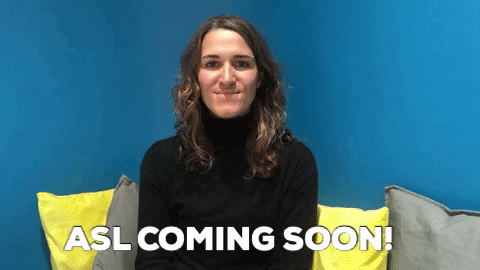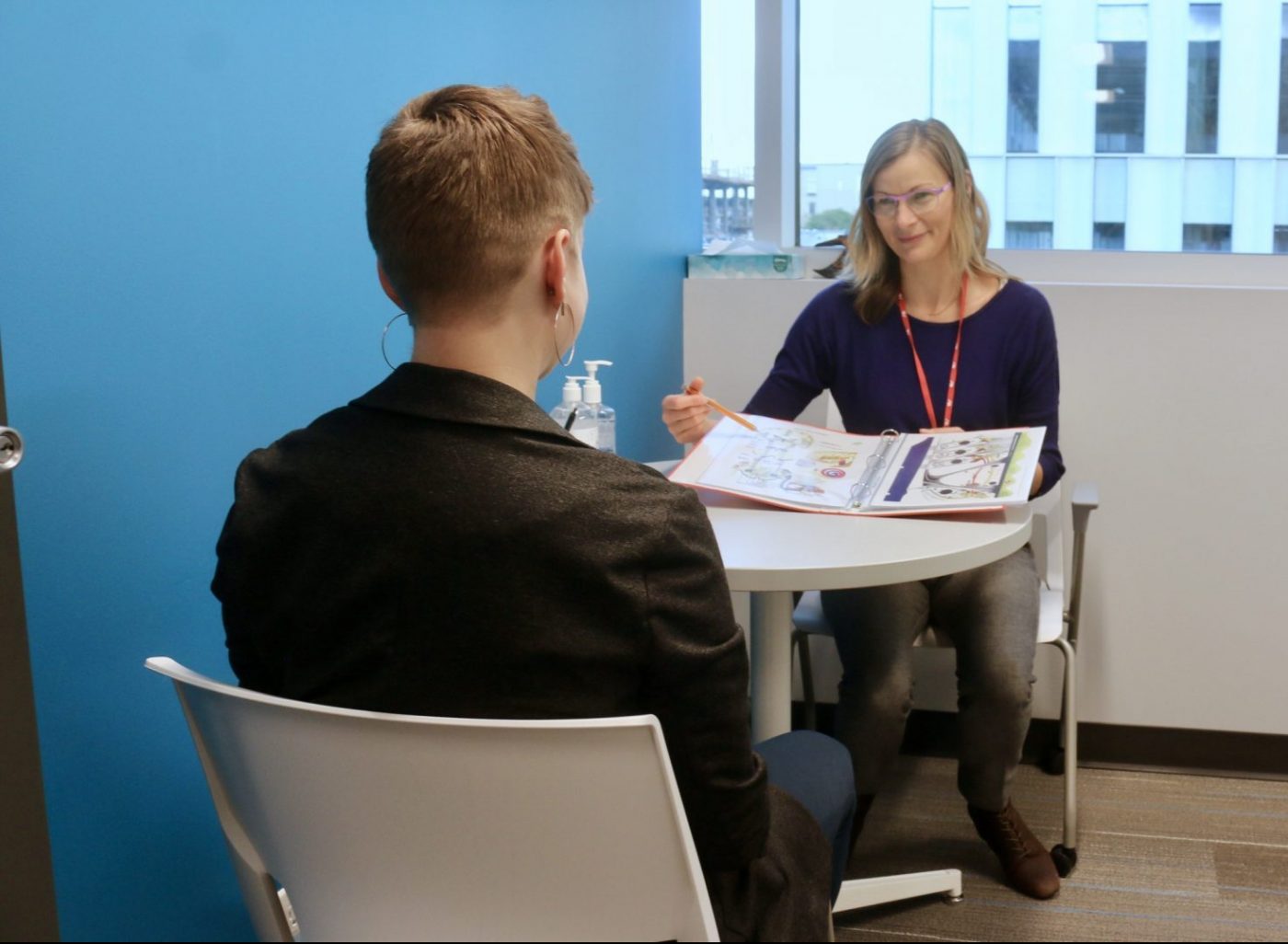Tinnitus and Decreased Sound Tolerance
Contact us for more information on the clinic or to schedule an appointment.
At the Wavefront Centre for Communication Accessibility, we recognize that tinnitus and decreased sound tolerance (DST) can negatively impact one’s quality of life. Therefore, our hearing clinics offer a special program to address those auditory conditions. We perform tinnitus and decreased sound tolerance evaluations, offer counselling and management strategies and provide evidence-based treatment options.
Because everyone experiences tinnitus/DST differently and its impact on one’s life can vary, we designed a tiered approach that will address those conditions depending on the individual’s needs and complexity, starting from comprehensive evaluation, through counselling and education and, if needed, providing an individualized treatment program.
Our Program:
- Step 1 – Diagnostic Hearing Assessment and Tinnitus/DST Evaluation(1.5 hours) which helps to identify changes in the auditory system that can lead to tinnitus. If a possible underlying medical cause is identified, our audiologist will make an appropriate referral to have it further investigated by an otolaryngologist. If specialized tinnitus services are recommended, you will be referred to one of our audiologists who are specially trained in tinnitus services.
- Step 2 – Tinnitus/Decreased Sound Tolerance Education Session (1.5 hours): consists of tinnitus screening an educational PowerPoint presentation, and an overview of current treatment approaches and management strategies.
- Step 3 – Follow-up tinnitus/DST consultations (1 hour) which is to review and evaluate benefits of currently used strategies, revise treatment approaches, and offer additional tinnitus/DST education, as needed.
- Step 3B – Cognitive Behavioural Therapy or other form of therapy delivered by a trained therapist be used concurrently with the treatment offered by us if tinnitus/DST is significantly impacting your mental health
- Step 4 – Individualized Tinnitus/DST Therapy is recommended for anyone with intrusive and bothersome tinnitus or sound intolerance that is difficult to manage on your own.
Request an appointment
(Drop-in services currently suspended until further notice. Please book an appointment with us.)
What is Tinnitus?
Tinnitus is an involuntary perception of sound, sometimes heard as ringing, popping, or buzzing that is not present in the environment yet can be heard in the ears or the head. Some people may report a steady sound while others experience fluctuations in the sound’s quality or perceived loudness. If you are experiencing tinnitus, know that you are not alone. Tinnitus is very common. According to a recent analysis of Canadian data from Statistics Canada Health Report1, 9.2 million adult Canadians (37% of the population) experienced tinnitus in the past year, of which 1.7 million (7% of the population) reported it as bothersome.
What Can Cause Tinnitus?
The most common causes of tinnitus are hearing loss and noise exposure. However, other risk factors can include:
- Wax in the ear(s)
- Middle and inner ear disorders
- Head, neck and jaw issues
- Whiplash injuries
- Muscle spasms
- Some medications
- Some medical conditions such as otosclerosis or a benign growth on the auditory nerve
What To Do If You Experience Tinnitus?
- Most people who experience tinnitus can easily habituate to it, which means that they learn to view it in the same neutral way as when they listen to a constant sound of a refrigerator or air conditioning in their home. Some, however, can find it bothersome and intrusive and will experience reduced enjoyment of life because of it.
- Audiologists are one of the best trained professionals to address tinnitus because of their extensive knowledge of the auditory system, auditory disorders, hearing loss treatment and hearing conservation.
- It is important to remember that tinnitus is a symptom, not a disease, therefore it does not require a cure; however, when it is perceived as bothersome by an individual it requires therapeutic intervention. There are several evidence-based approaches available to successfully manage tinnitus symptoms.
What Are Hyperacusis and Decreased Sound Tolerance?
Hyperacusis is a form of decreased sound tolerance. Hyperacusis occurs when everyday sounds that most people can tolerate comfortably or consider only as slightly loud are perceived to be uncomfortably loud and at times even painful.
Another form of decreased sound tolerance is misophonia. It is defined as a strong dislike of specific sounds (such as: the sound of someone chewing, copy machine, certain voices, running water etc.). Phonobia is a form of misophonia with fear as the dominant emotion. Intolerance for these sounds may develop when people view them as invasion of their personal space.
Currently, we do not offer treatment for misophonia or phonophobia; however, we can offer reliable referral sources, if needed.
What Can Cause Hyperacusis?
- Hearing loss and/or tinnitus
- Noise exposure (this can include a sudden noise or long-term noise exposure)
- Temporomandibular joint (TMJ) syndrome
- Viral infections that involve the inner ear such as Bell’s Palsy
- Head injury
- Associated with developmental disorders in children, such as William’s Syndrome and Autism Spectrum Disorder (ASD)
- Lyme disease
- Air bag deployment
- Psychological issues – for instance post-traumatic stress disorder (PTSD) or depression
- Chronic conditions such as migraine, fibromyalgia, fatigue
How to Manage Hyperacusis?
- A successful treatment involves counselling and sound therapy over a few months to a year.
- Sound-generating devices that produce a gentle white noise at a soft but comfortable level are encouraged for almost all waking hours.
- Entire therapy to improve sound tolerance requires patience and commitment.
- Thought adjustment therapies can help address maladaptive or negative thoughts.
- Use of appropriately attenuated noise reduction plugs should be discussed with an audiologist when noise exposure is present. Overuse of hearing protection is discouraged.
- No medications or surgical treatments exist to help with hyperacusis.
Components of Our Tinnitus and Decreased Sound Tolerance Program
- Step 1. Diagnostic Hearing Assessment and Tinnitus/DST Evaluation (1.5 hours). It is recommended for anyone seeking advice about their tinnitus and/or sound tolerance concerns. It includes gathering relevant medical and ear/hearing related history, completing tinnitus/DST questionnaires and comprehensive hearing assessment, which may also include specific tinnitus and loudness tolerance measurements. We then review your results, provide counseling with a brief overview of tinnitus/DST mechanism, and offer management strategies and further treatment recommendations. For those with hearing concerns, a discussion about hearing instruments may be included, if time permits. In some cases, a follow up appointment may be advised. If further referrals are recommended, a report to your family doctor will be provided with your consent. You may also be invited to attend our special Tinnitus/DST Education Session.
- Step 2. Tinnitus/Decreased Sound Tolerance Education Session (1.5 hours). It is recommended for anyone who wants to better understand their tinnitus or decreased sound tolerance. You may just be curious about it. You may be looking for more reliable information on this subject and seeking professional advice on coping strategies. You may also find that tinnitus/DST has negatively impacted your life and you want to know what treatments options are available. During this session you will view a PowerPoint presentation which will try to demystify and normalize your tinnitus/DST experience by explaining the neurophysiologic mechanisms behind it, exploring the important connections between auditory brain and other brain areas that contribute to the tinnitus/DST experience, and learning about the processes of habituation and desensitization and their importance in managing tinnitus and decreased sound sensitivity. The presentation will also cover evidence-based self-help strategies, lifestyle changes and therapies used to manage tinnitus and DST. The audiologist will then discuss your preferences with you and specific management steps will be outlined. You will be provided with printouts or electronic copies of relevant handouts, useful websites, books and other resources based on your needs and preferences.
- Step 3A. Follow-up tinnitus/DST consultations (1 hour). We offer follow-up counselling sessions to review and evaluate benefits of currently used strategies, revise treatment approaches, and offer additional tinnitus/DST education, as needed.
- Step 3B. If tinnitus/DST is significantly impacting your mental health, we recommend that Cognitive Behavioural Therapy or other form of therapy delivered by a trained therapist be used concurrently with the treatment offered by us.
- Step 4. Individualized Tinnitus/DST Therapy. It is recommended for anyone with intrusive and bothersome tinnitus or sound intolerance that is difficult to manage on your own. Through a series of these sessions (usually 5-7 over the course of 12-18 months) we offer a more guided treatment approach based on elements of recognized and validated approaches, such as Tinnitus Retraining Therapy, Progressive Tinnitus Management and Tinnitus Activities Treatment. This step requires a commitment to a longer process that may take up to 18 months and adherence to recommendations and use of recommended devices, which you may be recommended to purchase. We start with an initial consultation (2 hours) during which we explore reasons why tinnitus/DST is so persistent, perform additional measures to quantify tinnitus and DST, set specific treatment goals and offer more focused informational counselling based on the Neurophysiological Model of tinnitus and DST. The follow-up sessions are 1 hour long. At follow-up appointments, we will evaluate treatment progress, review goals, adjust sound generators and continue providing informational counselling.
Sources:
- Ramage-Morin, P. et al. (2019, March). Tinnitus in Canada. Statistics Canada. Catalogue no.82-003-X. Health Reports. Vol.30. no.3. pp. 3-11. doi: https://www.doi.org/10.25318/82-003-x201900300001-eng
- Han BI, Lee HW, Kim TY, Lim JS, Shin KS. Tinnitus: Characteristics, causes, mechanisms, and treatments. Journal of Clinical Neurology2009; 5(1):11-19.
- Westcott, M. Middle Ear Myoclonus and Tensor Tympani Syndrome. DWM Audiology. Retrieved from: www.dwmaudiology.com.au.
- Jastreboff, P. & Jastreboff, M. (2002). Decreased sound tolerance and tinnitus retraining therapy. Australian and New Zealand Journal of Audiology. 24. No.2. pp. 74-84.
Best On-Line Resources
Hyperacusis Research: www.hyperacusisresearch.org
Canadian Academy of Audiology: https://caatinnitus.weebly.com/
British Tinnitus Association: https://www.tinnitus.org.uk/
American Tinnitus Association: www.ata.org
Ida Institute Tinnitus First Aid kit: www.tinnituskit.com
![]()
![]()
![]()

